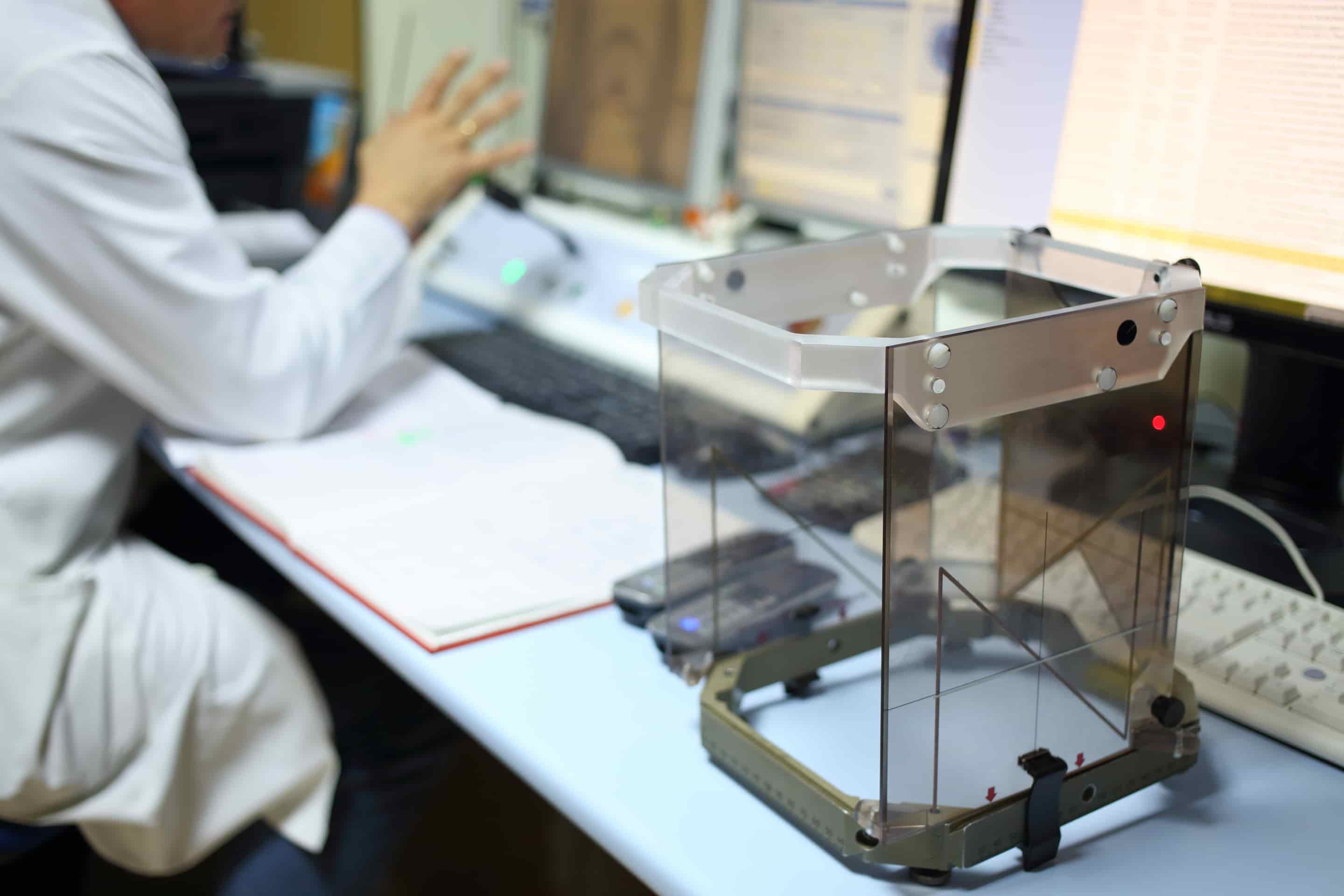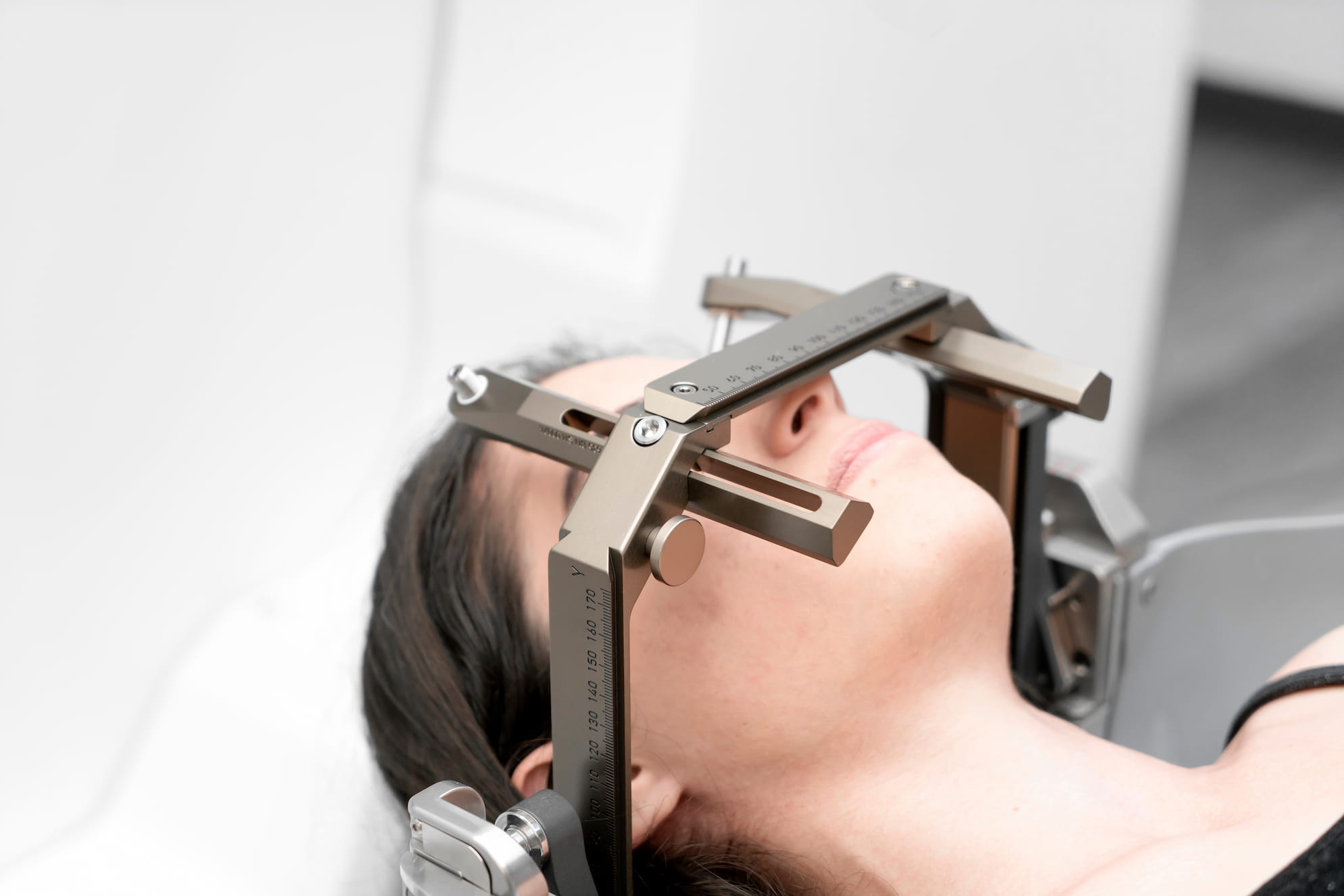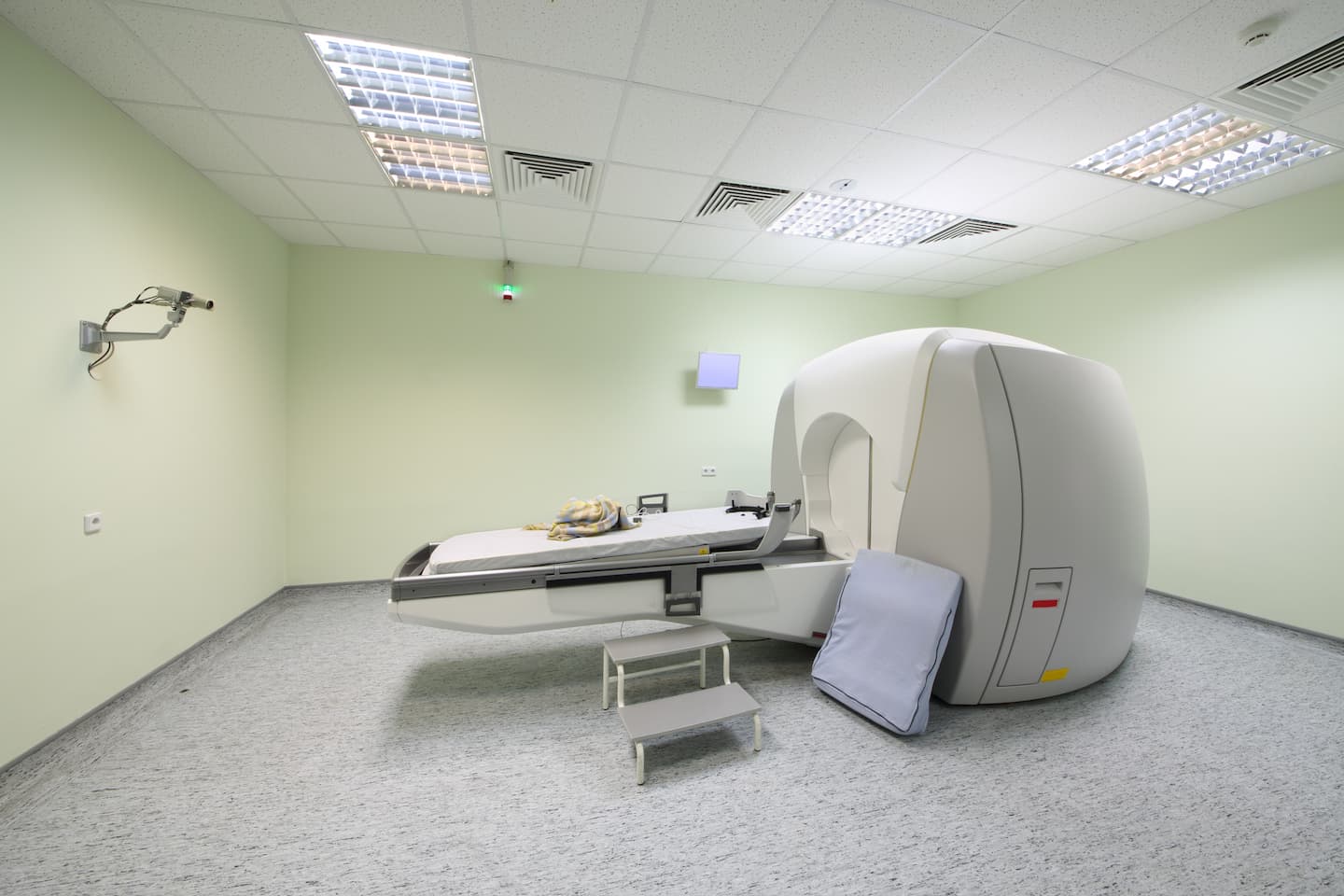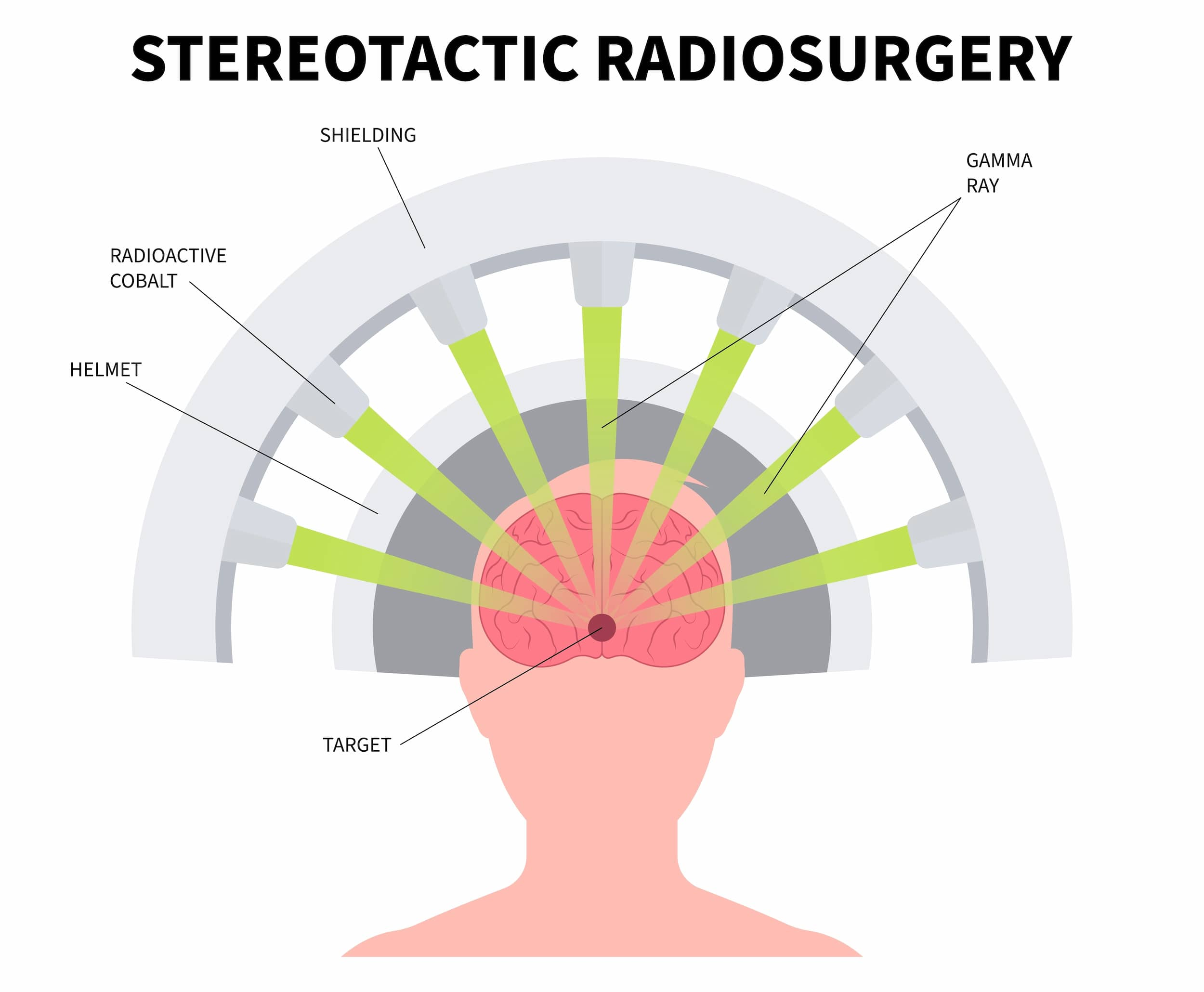Stereotactic Radiosurgery in Turkey
Healthy Türkiye helps you find the best stereotactic radiosurgery in Turkey at affordable prices and adopts a 360-degree service approach in all areas of health through affiliated hospitals.
- Medical Treatment
- Neurosurgery in Turkey
- Spinal Fusion Surgery in Turkey
- Spinal Stenosis Treatment in Turkey
- Brain Surgery in Turkey
- Brain Tumor Surgery in Turkey
- Disc Replacement in Turkey
- Spinal Surgery in Turkey
- Deep Brain Stimulation in Turkey
- Hydrocephalus Treatment in Turkey
- Minimally Invasive Neurosurgery in Turkey
- Neurotrauma Treatment in Turkey
- Pediatric Neurosurgery in Turkey
- Vascular Neurosurgery in Turkey
- Brain Aneurysm Surgery in Turkey
- Craniotomy for Brain Tumor Resection in Turkey
- Lumbar Fusion Surgery in Turkey
- Lumbar Herniation Treatment in Turkey
- Lumbar Spine Surgery in Turkey
- Micro Lumbar Discectomy in Turkey
- Microdiscectomy Spine Surgery in Turkey
- Peripheral Nerve Surgery in Turkey
- Ventral Discectomy in Turkey
- Brachial Plexus Surgery in Turkey
- Neuro-Oncology Treatment in Turkey
- Neuroendoscopy in Turkey
- Radiofrequency Rhizotomy in Turkey
- Spinal Decompression Therapy in Turkey
- Stereotactic Radiosurgery in Turkey
- Spinal Cord Stimulator in Turkey
- Homepage
- Medical Treatment
- Stereotactic Radiosurgery in Turkey

About Stereotactic Radiosurgery in Turkey
Stereotactic radiosurgery in Turkey, or SRS, is a minimally invasive concentrated beam of radiation that aids in the destruction of cancer cells and other abnormalities of the brain, spine, and other body areas. In this procedure, the radiation waves are delivered using specialized equipment. Radiation waves are used precisely to ensure that adjacent organs and tissue are not harmed. Stereotactic radiosurgery is a non-surgical radiation treatment used to treat functional disorders and small tumors of the brain. It can provide precisely-targeted radiation in more minor high-dose treatments than standard therapy, preserving healthy tissue. When stereotactic radiosurgery is used to treat body tumors, it is defined as stereotactic body radiotherapy (SBRT).
The stereotactic radiosurgery procedure is frequently used to treat disorders that do not originate in the central nervous system. There are several side effects that must be dealt with after radiation has successfully treated the issues. Fatigue, skin issues, and brain swelling are all common radiation after-results. stereotactic radiosurgery is a targeted therapy that causes the cancerous cell to become distorted. There is the removal of the cancerous cell is included in the process. Stereotactic radiosurgery, like stereotactic radiation body therapy, aims to cure cancer in the body. The radiation waves are specifically directed to the part of the tumor in this operation. While the radiation is aimed toward the intended spot, the patient must stay in a static head position.
In stereotactic radiosurgery, the specialized equipment focuses a large number of small radiation waves on a tumor or cancer growth. A single beam has minimal effects on the tissue it passes through. However, at the point where all the beams connect, a focused dose of radiation is delivered. Tumors shrink and blood vessels block off over time as a consequence of the high dosage of radiation delivered to the affected region, shutting off the tumor’s blood supply. At Healthy Türkiye, we work in collaboration with quality surgeons and specialists having substantial expertise in effectively executing stereotactic radiosurgery in Turkey. Our team makes sure that you receive the finest quality stereotactic radiosurgery and continue your life effectively after the treatment.

Stereotactic Radiosurgery Procedure in Turkey
Stereotactic radiosurgery is a cutting-edge form of radiation therapy in Turkey that delivers powerful and precisely targeted doses of radiation to small areas, actually killing a small group of cells (tumors) without any surgery. Stereotactic radiosurgery can easily target multiple tumors deep in the brain. This treatment does not have risks and complications of surgery. SRS is also known as a painless treatment. This improvement in technology has given a ray of hope for all tumors that were inoperable and patients were not having a choice but to wait for an end. Today, 95% of brain tumors are treatable irrespective of their position either by minimally invasive operation and by stereotactic radiosurgery, or a combination of both.
Stereotactic radiosurgery is an innovative technology that enables physicians to treat multifarious anomalies using radiation. During stereotactic radiosurgery procedures, X-ray waves are focused on the abnormal tissues through your skin. The precise exposure to X-rays deforms and destroys the DNA of abnormal cells by making them dormant or by initiating cell death. The targeted focus of the X-ray radiation during stereotactic radiosurgery provides minimal damage to the healthy surrounding tissue. In addition, with the help of stereotactic radiosurgery, your doctor decreases the risk of infection.
Medical tourism in Turkey ensures very good assistance to international patients for their low cost and safe surgical treatments like stereotactic radiosurgery. After patients’ arrival in Turkey, everything they require is taken care of by Healthy Türkiye. In addition, they help patients in selecting a professional surgeon for their safe stereotactic radiosurgery here. Turkey, which is one of the most sought-after medical tourism destinations in the world, has patients from all over the globe getting stereotactic radiosurgery in various hospitals. Reasons varying from the lower cost of stereotactic radiosurgery and shorter waiting period for surgeries are cited as reasons for Turkey becoming a hot destination for health tourists, mainly from the West and Gulf.
Reasons for Stereotactic Radiosurgery in Turkey
Stereotactic radiosurgery is a precise and powerful type of radiation therapy in Turkey. This procedure usually involves a single treatment of a very high dose of radiation in a focused location. Sometimes, it may contain a few treatments. During the radiosurgery procedure, your doctor uses radiation waves to damage the DNA of the tumor or other cells so that they no longer reproduce. This method causes the tissue of the tumor to die. The surgical precision of the technique is instrumental in treating minor or difficult-to-reach abnormalities in the brain and spine. The targeted focus of the radiation in stereotactic radiosurgery methods results in less damage to healthy surrounding tissues and less risk of infection, making it safer for those who have just had surgery.
Stereotactic radiosurgery was originally improved to treat small, deep brain tumors. Now, this treatment may be used for a wider array of problems in the brain and other parts of the body. Physicians use this procedure to treat areas that are hard to reach or close to vital organs, or they prefer it to treat tumors that have moved within the body. Examples of problems that your doctor can address with stereotactic radiosurgery contain:
Serious brain tumors
Residual tumor cells after surgical operation
Pituitary tumor cells
Eye cancers
Arteriovenous malformations, which are tangled blood vessels that leak and disrupt the normal flow
Neurological issues, such as trigeminal neuralgia
Tumor cells in the lung, liver, abdomen, spine, prostate, head, and neck
Parkinson’s condition
Epilepsy cases
Doctors might use stereotactic radiosurgery to treat older adults or people who are too sick to have conventional surgery. Sometimes, after someone has had surgery to remove a cancerous tumor, a doctor will prefer stereotactic radiosurgery to kill any remaining tumor cells that the surgeon may have missed.
Diseases Treated with Stereotactic Radiosurgery in Turkey
Stereotactic radiosurgery (SRS) is a non-invasive treatment in Turkey that performs dozens of tiny radiation beams to accurately target brain tumors with a single high dose of radiation. Despite its name, stereotactic radiosurgery is not a surgical procedure and does not need an incision or anesthesia. However, the radiation waves are as small and precise as a scalpel. A computer uses three-dimensional images from MRI and CT screenings to detect the exact dimensions of the tumor. It then calculates the radiation dose to be administered by nearly 300 radiation waves. This allows radiosurgeons to target the tumor without influencing delicate structures nearby. Stereotactic radiosurgery can cure multiple lesions in a single procedure.
For benign and malignant tumors: Stereotactic radiosurgery is most often used to treat benign and malignant tumors of the brain, skull base as well as head and neck. It may be used alone or in combination with other treatment modalities such as surgical operation or chemotherapy. The tumors treated may have occurred in another part of the body such as the breast or lung and spread (metastasized) to the brain or they may have originated in the brain. This includes meningiomas, pituitary adenomas, acoustic neuromas, and craniopharyngiomas. In some instances, stereotactic radiosurgery may be preferred to treat primary malignant tumors including glioma or oligodendroglioma.
For Vascular Neurosurgery: A stereotactic radiosurgery is an important method for treating vascular lesions such as arterio-venous malformations (AVMs) either as a stand-alone treatment or in concert with additional treatments such as vascular embolization.
Functional neurosurgery: This is an exciting and ever-expanding area of stereotactic radiosurgery and contains the treatment of trigeminal neuralgia and other pain syndromes. Today, stereotactic radiosurgery is being used in the treatment of some forms of epilepsy including those associated with hypothalamic hamartomas. Stereotactic radiosurgery also may be used to treat the symptoms (primarily tremors) associated with a number of movement disorders including parkinson’s disease, dystonia, and critical tremor. The analysis is ongoing with respect to the use of stereotactic radiosurgery in the treatment of a number of psychiatric diseases such as obsessive-compulsive disorder and mania.
A team of specialists is needed to plan and deliver stereotactic radiosurgery including radiation oncologists, radiation therapists, and medical physicists, alongside your neurology specialists. You will also be supported by a range of other professionals involving nurses and allied health practitioners. Turkey has a long history of treating stereotactic radiosurgery, and our experience is extensive. We prefer a highly sophisticated treatment machine incorporating the latest technology so we can present our patients with the best possible care. Please contact Healthy Türkiye to determine if stereotactic radiosurgery is the appropriate treatment for you.

We Care About Your Health
Healthy Türkiye provides the best for your health and comfort. You will feel privileged with us.
7/24 Quality Personal Assistance Throughout Your Journey
Customizable for You All-Inclusive Packages
Get the Right Advice for your Health
How Is Stereotactic Radiosurgery in Turkey Performed?
Stereotactic radiosurgery (SRS) in Turkey uses many precisely focused radiation waves to treat tumors and other issues in the brain, neck, lungs, liver, spine, and other parts of the body. It is not a surgical operation in the traditional sense because there is no incision. Instead, stereotactic radiosurgery uses 3D imaging to target high doses of radiation to the affected region with minimal influence on the surrounding healthy tissue. Like other forms of radiation, stereotactic radiosurgery is performed by damaging the DNA of the targeted cells. The influenced tumor cells then lose the ability to reproduce, which causes tumors to shrink.
Stereotactic radiosurgery procedure of the brain and spine is generally completed in a single session. Body radiosurgery is performed to treat lung, liver, adrenal, and other soft tissue tumors, and treatment usually involves multiple (three to five) sessions. When physicians use stereotactic radiosurgery to treat tumors in areas of the body other than the brain, it is sometimes defined as stereotactic body radiotherapy (SBRT) or stereotactic ablative radiotherapy (SABR). Doctors use three types of techniques to provide radiation during stereotactic radiosurgery in the brain and other parts of the body:
Linear accelerator (LINAC) machines use X-rays (photons) to treat cancerous and noncancerous abnormalities in the brain and other parts of the body. In medical literature, linear accelerator machines are also known by the brand name of the manufacturer, such as CyberKnife and TrueBeam. These machines can perform stereotactic radiosurgery (SRS) in a single course or over three to five courses for larger tumors, which is defined as fractionated stereotactic radiotherapy.
In stereotactic radiosurgery, gamma knife machines use 192 or 201 small waves of gamma rays to target and treat cancerous and noncancerous brain abnormalities. Gamma knife machines are less common than LINAC machines and are used mostly for small to medium tumors and lesions in the brain associated with a variety of cases.
Proton beam therapy (charged particle radiosurgery) is the newest type of stereotactic radiosurgery and is available in only a few research centers, although the number of centers presenting proton beam therapy has greatly raised in the last few years. Proton beam therapy can treat brain cancer cells in a single session using stereotactic radiosurgery. It can prefer fractionated stereotactic radiotherapy to treat body tumors over several sessions.
The number of treatment sessions can range from one to five in Turkey. Stereotactic radiosurgery treatment sessions run about 45 minutes but may be longer, depending on the size and number of tumors treated. At Healthy Türkiye, we give you the care and support you need to achieve the best possible result. We take the time to answer all your questions and contain your family in discussions about your planning and therapies.
After the Stereotactic Radiosurgery
After stereotactic radiosurgery, you may resume your normal activities. Your neurology and neurosurgery team will continue to monitor you with CT and MRI scans during follow-up. Stereotactic radiosurgery typically only requires one treatment. Some lesions may need more than one treatment session, likely finishing within five therapies. However, conventional radiation therapy can require up to 10 sessions.
The stereotactic radiosurgery technique allows the radiation to be delivered with greater precision to the cancerous tissue than other types of radiation therapy, sparing the surrounding healthy brain tissue from any significant dose. The procedure also controls the intensity of the beam so that no area gets too large a dose.
Stereotactic radiosurgery helps avoids the risk of hemorrhage, infection, and anesthesia that come from surgery. This procedure can be done as an outpatient treatment and requires only minimal interruption of other treatments, such as chemotherapy. The results of stereotactic radiosurgery for brain metastases appear to be equivalent to the consequences of surgery to remove the tumor. This single-day, high-dose treatment can also replace other types of radiation treatment that are offered in lower daily doses for a longer period of time (usually several weeks).
In Turkey, patients with primary brain tumors and brain metastases are cared for by a multidisciplinary team of experts which contains radiation oncologists, medical physicists, neurosurgeons, neurologists, neuro-radiologists, and expert nursing staff that is among the most experienced in the world. They treat hundreds of people with stereotactic radiosurgery every year. Healthy Türkiye experts have been leaders in the delivery of stereotactic radiosurgery, leading trials that have extended patients’ lives and improved their quality of life.
Good Candidate for Stereotactic Radiosurgery in Turkey
The stereotactic radiosurgery procedure may be suitable for you if you have either a tumor that starts in your brain (the primary tumor) or a tumor that has spread from elsewhere in your body (metastatic or secondary tumor). This contains:
If you have had a surgical operation to remove brain metastases to reduce the risk of recurrence
Small tumor cells such as pituitary adenomas and chordomas or meningiomas at the base of the skull
For benign (non-cancerous) tumors such as acoustic neuromas (vestibular schwannomas)
Stereotactic radiosurgery may not be suitable if:
The treatment area contains certain important nerves that could be damaged by radiation
Your tumor cells are larger than 3 cm across
At Healthy Türkiye, clinicians are experts in the use of stereotactic radiosurgery as well as other techniques and will decide if this is the best option for you after careful evaluation of your condition.

2026 Cost of Stereotactic Radiosurgery in Turkey
All types of medical attention like stereotactic radiosurgery are very affordable in Turkey. Many factors are also included in determining the cost of stereotactic radiosurgery in Turkey. Your process with Healthy Türkiye will last from the time you decide to have stereotactic radiosurgery in Turkey until the time you are fully recovered even if you are back home. The exact stereotactic radiosurgery procedure cost in Turkey depends on the type of operation involved.
The cost of stereotactic radiosurgery in Turkey does not demonstrate many variations in 2026. Compared to costs in developed countries like the United States or the UK, stereotactic radiosurgery costs in Turkey are relatively low. Therefore, it is no wonder patients from across the world visit Turkey for stereotactic radiosurgery procedures. However, the price is not the only factor affecting choices, we suggest looking for hospitals that are safe and have stereotactic radiosurgery reviews on Google. When people decide to seek medical help for stereotactic radiosurgery, they will not only have had low-cost procedures in Turkey, but also the safest and best treatment.
At clinics or hospitals contracted with Healthy Türkiye, patients will receive the best stereotactic radiosurgery from specialist doctors in Turkey at affordable rates. Healthy Türkiye teams to provide medical attention stereotactic radiosurgery procedures and high-quality treatment to patients at a minimum cost. When you contact Healthy Türkiye assistants, you can get free information about the cost of stereotactic radiosurgery in Turkey and what this cost covers.
The cost of a stereotactic radiosurgery procedure in the UK is in the range of £3.000-£6.000.
The cost of stereotactic radiosurgery in the USA is in the range of $3.000-$5.000.
The cost of stereotactic radiosurgery in Turkey is in the range of $500-$1.000.
Price of the Stereotactic Radiosurgery in the UK
Price of Stereotactic Radiosurgery in the USA
Price of Stereotactic Radiosurgery in Turkey
Why Is Stereotactic Radiosurgery Cheaper in Turkey?
One of the main considerations before traveling abroad for stereotactic radiosurgery is the cost-effectiveness of the whole process. Many patients think that when they add flight tickets and hotel expenses to their stereotactic radiosurgery costs, it will become very expensive to travel, which is not true. Contrary to popular belief, round-trip flight tickets to Turkey for stereotactic radiosurgery can be booked very affordably.
In this case, assuming you are staying in Turkey for your stereotactic radiosurgery, your total travel expense of flight tickets and accommodation will only cost less than any other developed country, which is nothing compared to the amount that you are saving. The question “why is stereotactic radiosurgery cheaper in Turkey?” is so common between patients or people simply curious about getting their medical treatment in Turkey. When it comes to stereotactic radiosurgery prices in Turkey, there are three factors allow cheaper prices:
The currency exchange is favorable for whoever looking for stereotactic radiosurgery has a euro, dollar, or pound;
The lower cost of living and cheaper overall medical expenses such as stereotactic radiosurgery;
For stereotactic radiosurgery, incentives are given by the Turkish Government to medical clinics working with international clients;
All these factors allow for cheaper stereotactic radiosurgery prices, but let’s be clear, these prices are cheaper for people with strong currencies (as we said, euro, dollar, Canadian dollar, pound, etc.) Every year, thousands of patients from all over the world come to Turkey to get stereotactic radiosurgery. The success of the healthcare system has increased in recent years, especially for stereotactic radiosurgery. It is easy to find well-educated and English-speaking medical professionals in Turkey for all kinds of medical treatment such as stereotactic radiosurgery.

Why Choose Turkey for Stereotactic Radiosurgery?
Turkey is a common choice among international patients seeking advanced stereotactic radiosurgery. Turkey’s health procedures are safe and effective operations with a high success rate like stereotactic radiosurgery. The increasing demand for high-quality stereotactic radiosurgery at affordable prices has made Turkey a popular medical travel destination. In Turkey, stereotactic radiosurgery is performed by highly experienced and trained doctors with the most advanced technology in the world. Stereotactic radiosurgery is done in Istanbul, Ankara, Antalya, and other major cities. The reasons for choosing stereotactic radiosurgery in Turkey are as follows:
High-quality hospitals: Joint Commission International (JCI) accredited hospitals have dedicated stereotactic radiosurgery units that are specially designed for patients. International and national strict protocols provide effective and successful stereotactic radiosurgery for patients in Turkey.
Qualified experts: The expert teams include nurses and specialist doctors, together to carry out stereotactic radiosurgery according to the patient’s needs. All the included doctors are highly experienced in performing stereotactic radiosurgery.
Affordable price: The cost of stereotactic radiosurgery in Turkey is affordable compared to Europe, the USA, the UK, Singapore, Australia, etc.
The high success rate: Highly experienced specialists, the best available technology, and stringently followed safety guidelines for post-operative care of the patient, resulting in a high success rate for stereotactic radiosurgery in Turkey.
To bolster the reliability of stereotactic radiosurgery in Turkey, a recent clinical study was conducted to evaluate the efficacy of this minimally invasive treatment in comparison to traditional therapies for functional disorders and small tumors of the brain. The study included a diverse group of patients and assessed the outcomes, focusing on the reduction of side effects and preservation of healthy tissue. The findings demonstrated that stereotactic radiosurgery, including stereotactic body radiotherapy (SBRT), provides precisely-targeted radiation with fewer high-dose treatments, leading to improved patient outcomes and reinforcing the credibility of Turkey’s approach to advanced cancer treatment.
Is Stereotactic Radiosurgery Safe in Turkey?
Did you know Turkey is one of the most visited destinations for stereotactic radiosurgery in the world? It is ranked one of the most visited tourist destinations for stereotactic radiosurgery. Over the years it has also come to be a very popular medical tourism destination too with many tourists coming in for stereotactic radiosurgery. There are so many reasons why Turkey stands out as a leading destination for stereotactic radiosurgery. Because Turkey is both safe and easy to travel to too with a regional airport hub and flight connections to pretty much everywhere, it is preferred for stereotactic radiosurgery.
The best hospitals in Turkey have experienced medical staff and specialists who have performed thousands of medical services such as stereotactic radiosurgery. All procedures and coordination related to stereotactic radiosurgery are controlled by the Ministry of Health in accordance with the law. Over many years, the greatest progress in medicine has been observed in the field of stereotactic radiosurgery. Turkey is known among foreign patients for its great opportunities in the area of stereotactic radiosurgery.
To emphasize, besides the price itself, the key factor in selecting a destination for stereotactic radiosurgery is certainly the standard of medical services, the hospital staff’s high expertise, hospitality, and the safety of the country.
All-Inclusive Packages for Stereotactic Radiosurgery in Turkey
Healthy Türkiye offers all-inclusive packages for stereotactic radiosurgery in Turkey at much lower prices. Extremely professional and experienced doctors and technicians carry out high-quality stereotactic radiosurgery. The cost of stereotactic radiosurgery in European countries can be quite expensive, especially in the UK. Healthy Türkiye provides cheap all-inclusive packages for a long and short stay of stereotactic radiosurgery in Turkey. Because of many factors, we can provide you with many opportunities for your stereotactic radiosurgery in Turkey.
The price of stereotactic radiosurgery differs from other countries due to medical fees, staff labor prices, exchange rates, and market competition. You can save much more in stereotactic radiosurgery compared to other countries in Turkey. When you purchase a stereotactic radiosurgery all-inclusive package with Healthy Türkiye our healthcare team will present hotels for you to choose from. In stereotactic radiosurgery travel, you will have the price of your stay included in the all-inclusive package cost.
In Turkey, when you purchase stereotactic radiosurgery all-inclusive packages through Healthy Türkiye, you will always receive VIP transfers. These are provided by Healthy Türkiye, which is contracted with highly qualified hospitals for stereotactic radiosurgery in Turkey. Healthy Türkiye teams will organize everything about stereotactic radiosurgery for you and have you picked up from the airport and safely brought to your accommodation. Once settled in the hotel, you will be transferred to and from the clinic or hospital for stereotactic radiosurgery. After your stereotactic radiosurgery has been successfully completed, the transfer team will return you to the airport in time for your flight home. In Turkey, all packages of stereotactic radiosurgery can be arranged upon request, which relaxes the minds of our patients. You can reach out Healthy Türkiye for everything you need to know about stereotactic radiosurgery in Turkey.
The Best Hospitals in Turkey for Stereotactic Radiosurgery
The best hospitals in Turkey for stereotactic radiosurgery are Healthy Türkiye, Memorial Hospital, Acıbadem International Hospital, and Medicalpark Hospital. These hospitals attract patients from all over the world seeking stereotactic radiosurgery due to their affordable prices and high success rates.
Best Doctors and Surgeons in Turkey for Stereotactic Radiosurgery
The best doctors and surgeons in Turkey for stereotactic radiosurgery are highly skilled professionals who offer specialized care and advanced procedures. With their expertise and state-of-the-art techniques, these specialists ensure that patients receive high-quality stereotactic radiosurgery and achieve optimal health results.

Frequently Asked Questions
Tiredness and fatigue may appear for the first few weeks after stereotactic radiosurgery. Swelling in the brain at or near the treatment area can cause signs and symptoms such as headache, nausea, and vomiting.
This means the tumor obtains a high dose of radiation and the tissues around it receive a much lower dose. This condition lowers the risk of side effects. Generally, you have between 1 and 8 stereotactic radiosurgery treatments.
Although the results of stereotactic radiosurgery on tumor tissue can be seen a few weeks after the procedure, it may take up to two years to see the outcomes of stereotactic radiosurgery on an AVM.
You may develop fatigue 4 to 6 weeks after you finish the procedure. The feeling of fatigue can range from mild to severe. It may last for several months after your stereotactic radiosurgery ends.
SRS has shown dramatically better outcomes than conventional radiation therapy. Whereas two-year success rates for conventional treatment range from 30 to 40 percent, the success rates for stereotactic radiosurgery range from 80 to 90 percent.
Despite the advent of modern stereotactic radiotherapy methods, radiation-induced brain injury remains an important complication where cognitive impairment can range from mild to severe and more rarely progressive and debilitating.
